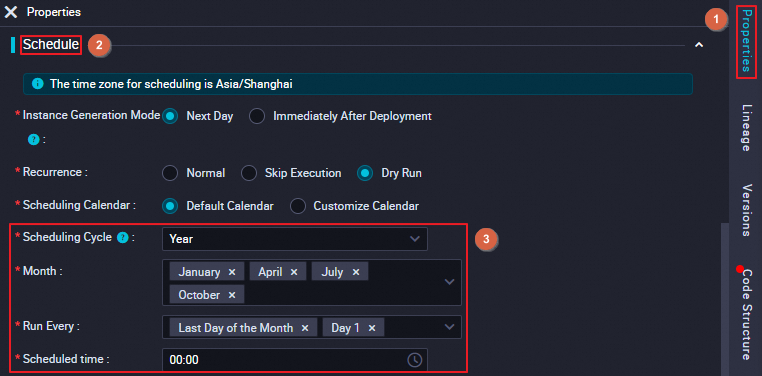If a node is scheduled by year, the node is automatically run at a specified point in time on specific days every year. For example, a node is scheduled to run in the last day of January every year.
Precautions
To ensure that the descendant nodes of a node that is scheduled by year can run as expected at a point in time that is not the scheduling time of the node, the system generates a dry-run auto triggered instance for the node.
If a node is dry run, the system does not actually run the node but directly prompts that the node is successfully run.
The running duration of the node is 0 second, and no run logs are generated for the node.
The node does not occupy scheduling resources.
The node does not block the running of its descendant nodes that are scheduled by minute, hour, or day.
Configuration example
- Configuration method
On the DataStudio page, create a node and go to the configuration tab of the node. Click the Properties tab in the right-side navigation pane. In the General section of the Properties tab, configure the scheduling period for the node.
Scenario
Configuration details
If the node is scheduled to run at a specified point in time on the first and last days of January, April, July, and October every year, the scheduling system runs the instances that are generated on these days every year. The scheduling system generates dry-run instances for the node on each of the other days in the year and directly returns a success response for the instances. The code of the instances is not run. The following figure shows the details about the configurations.
Note The cron expression is automatically generated based on the scheduling time that you select and cannot be changed.
Scheduling details
The scheduling system automatically generates and runs instances for the node.
